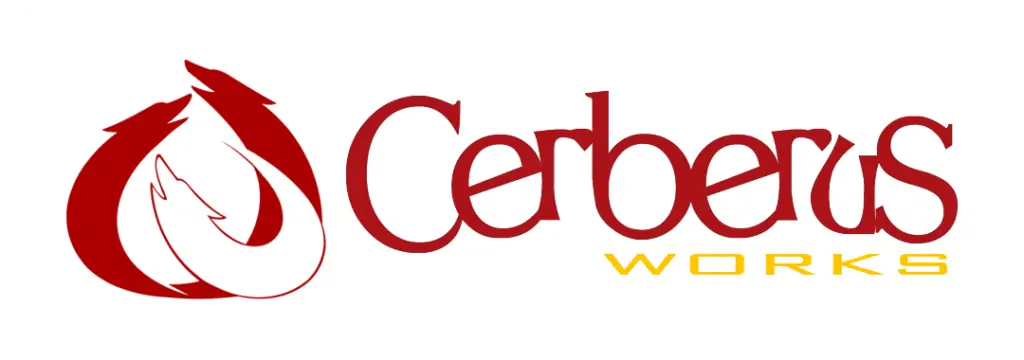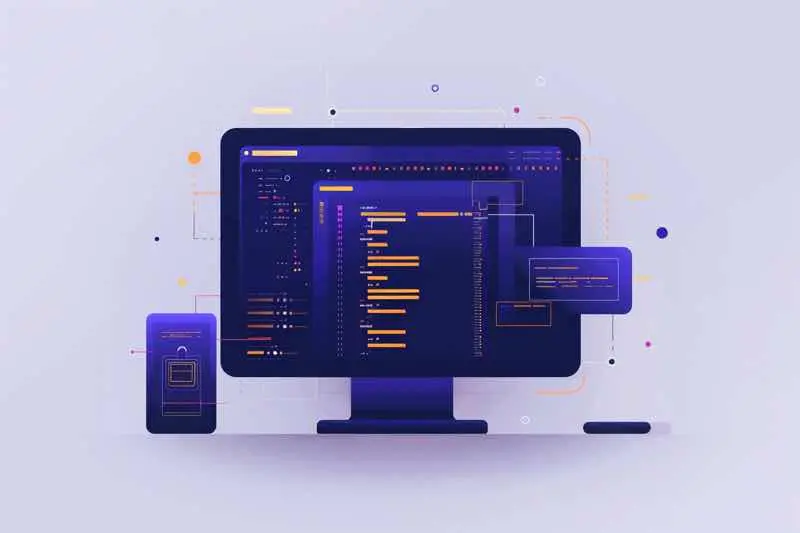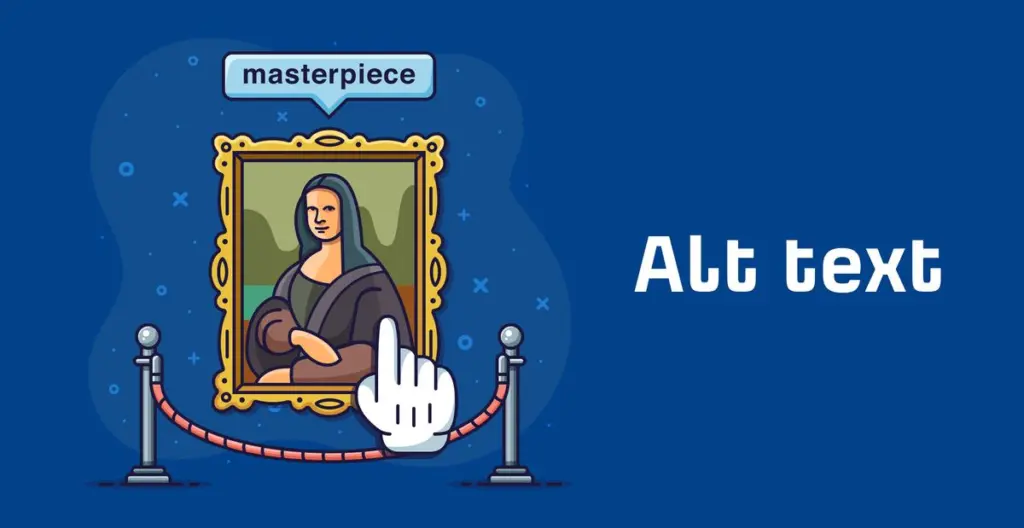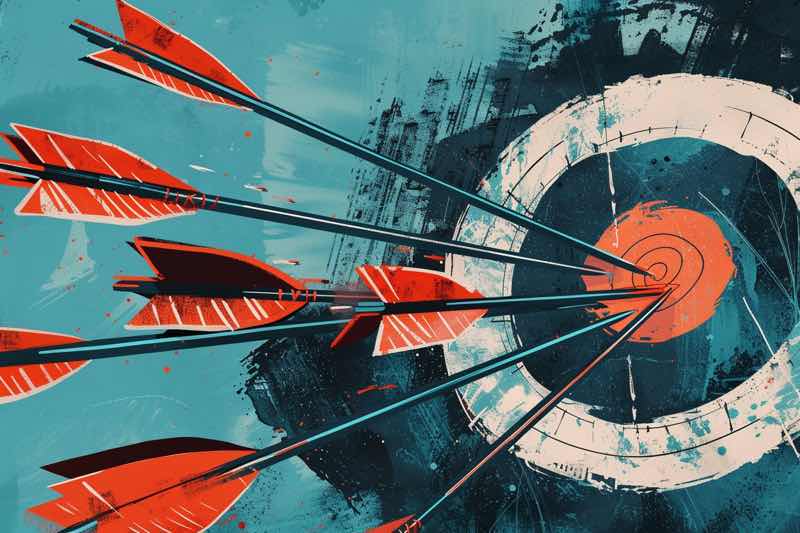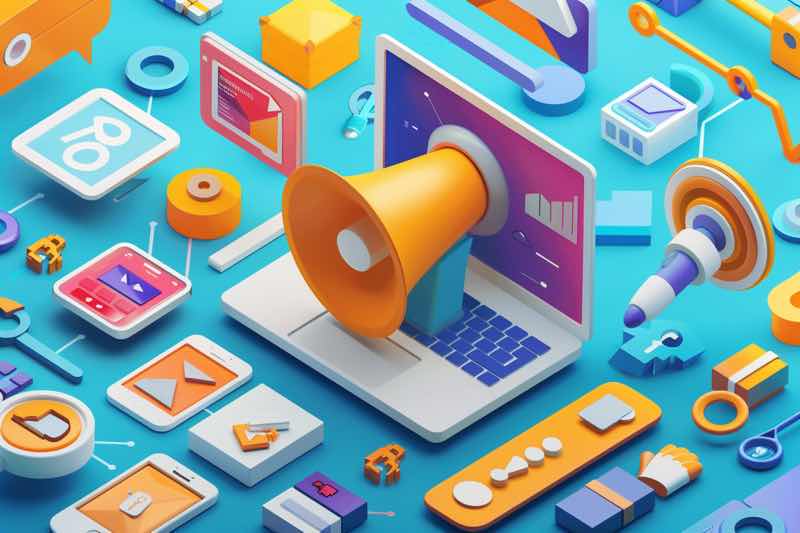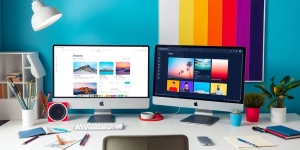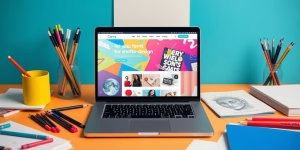As we dive into the world of UI UX design in 2024, it’s essential to understand the roadmap that will guide you to success. This comprehensive guide will explore the core elements of UI UX design, the skills you need to develop, and the latest trends shaping the industry. Whether you’re a beginner or looking to enhance your skills, this roadmap will help you navigate your journey in UI UX design effectively.
Daftar Isi
BeralihHal-hal Penting yang Dapat Dipetik
- Understanding the difference between UI and UX design is crucial for creating user-friendly products.
- A successful UI UX design roadmap includes essential skills like design principles, user psychology, and tool proficiency.
- Staying updated with the latest design trends such as dark mode and 3D graphics is important for relevance in the field.
- Building a strong portfolio that showcases a variety of projects and your design process is vital for attracting potential clients.
- Networking and continuous education through online courses and design communities can significantly enhance your career prospects.
Understanding the UI UX Design Roadmap

Defining UI and UX Design
UI (User Interface) and UX (User Experience) design are two important areas in creating digital products. UI focuses on how a product looks, including colors, buttons, and layouts. In contrast, UX is about how a user feels when using a product, ensuring it is easy and enjoyable to navigate. Understanding these differences is crucial for any aspiring designer.
The Importance of a Design Roadmap
A design roadmap is essential for guiding your journey in UI/UX design. It helps you plan your learning and career steps effectively. Here are some key reasons why having a roadmap is important:
- Kejelasan: It provides a clear path to follow.
- Fokus: Helps you concentrate on what skills to develop.
- Progress Tracking: You can measure your growth over time.
Key Components of a Successful Roadmap
To create a successful UI/UX design roadmap, consider including these components:
- Skill Development: Identify the skills you need to learn, such as design principles and tools.
- Project Experience: Work on real projects to build your portfolio.
- Jaringan: Connect with other designers and professionals in the field.
A well-structured roadmap can make the difference between success and confusion in your design career.
By understanding the UI/UX design roadmap, you can better prepare yourself for a successful career in this exciting field. Remember, the journey may be challenging, but with the right guidance, you can achieve your goals!
Essential Skills for UI UX Designers in 2024
Mastering Design Principles
To create effective designs, understanding design principles is crucial. These principles guide designers in making choices that enhance user experience. Here are some key principles:
- Visual Hierarchy: Organizing elements to guide user attention.
- Kesederhanaan: Keeping designs clean and straightforward.
- Konsistensi: Ensuring uniformity across all design elements.
Understanding User Psychology
A successful designer must grasp how users think and behave. This knowledge helps in creating designs that resonate with users. Key areas to focus on include:
- Emotional Design: Crafting experiences that evoke feelings.
- User Feedback: Incorporating user responses to improve designs.
- Aksesibilitas: Making designs usable for everyone, including those with disabilities.
Proficiency in Design Tools
In 2024, being skilled in various design tools is essential. Here are some popular tools:
| Alat | Deskripsi |
|---|---|
| Figma | Great for collaborative design and prototyping. |
| Sketch | Ideal for vector-based designs on macOS. |
| Adobe XD | Offers powerful features for UI/UX design. |
| InVision | Excellent for prototyping and user testing. |
Mastering these skills will not only enhance your design capabilities but also prepare you for the competitive landscape of UI/UX design in 2024. Stay ahead by continuously learning and adapting!
Tren Terbaru dalam Desain UI UX
Minimalist and Maximalist Design Approaches
In 2024, the design world is seeing a blend of minimalism and maximalism. This means that while simplicity is key, designers are also adding bold elements to make interfaces stand out. This trend focuses on creating a balance between clean designs and impactful visuals.
- Clean lines and ample white space
- Strategic use of color and typography
- Engaging visuals that enhance usability
Dark Mode and High Contrast Interfaces
Dark mode has become a standard feature in many applications. It not only looks sleek but also helps users with visual impairments. Expect to see more designs that allow users to switch between light and dark modes easily.
- Improved readability in various lighting conditions
- Enhanced user comfort
- Aesthetic appeal that attracts users
Integration of 3D Graphics and AR/VR
The use of 3D graphics and augmented reality (AR) is changing how users interact with digital products. Designers are finding new ways to make experiences more immersive. In 2024, expect to see more applications using these technologies to engage users.
- Enhanced interactivity in apps
- More engaging e-commerce experiences
- Innovative educational tools that captivate users
The future of UX design in 2024 is bright, with trends like advanced cursor interactions and personalized experiences shaping user experiences for success.
| Trend | Deskripsi |
|---|---|
| Desain Minimalis | Focus on simplicity with impactful visuals |
| Mode Gelap | Standard feature for improved accessibility |
| 3D Graphics and AR/VR | Creating immersive and engaging user experiences |
By keeping an eye on these trends, designers can create user experiences that are not only functional but also visually appealing and engaging.
Building a Strong UI UX Design Portfolio
Showcasing a Variety of Projects
To create a standout portfolio, it’s essential to include a diverse range of projects. Here are some tips:
- Include different styles: Show your ability to adapt to various design needs.
- Highlight different industries: This demonstrates your versatility.
- Focus on user needs: Tailor your projects to meet specific user requirements.
Highlighting Your Design Process
When presenting your work, it’s crucial to explain your design process. This should include:
- Research: Show how you gathered information.
- Wireframes: Include early sketches to illustrate your ideas.
- Pembuatan prototipe: Share how you developed your designs into usable products.
By detailing your process, you help potential employers understand your problem-solving skills and thought process.
Focusing on Real-World Impact
Your portfolio should also emphasize the impact of your designs. Consider these points:
- Use metrics: Show how your designs improved user experiences.
- Include testimonials: Feedback from users can add credibility.
- Demonstrate business results: Highlight how your work achieved specific goals.
A well-crafted portfolio is a powerful tool to build trust and attract opportunities in a competitive market.
Keeping It Up to Date
Regularly update your portfolio to reflect your latest work. Here’s how:
- Remove outdated projects: Keep only what showcases your current skills.
- Add new projects: Include recent work that demonstrates your growth.
- Stay engaged: An up-to-date portfolio shows you are active in the field.
By following these guidelines, you can create a strong UI UX design portfolio that stands out to potential employers and clients.
Networking and Professional Development
Joining Design Communities and Organizations
Connecting with others in the UI/UX field is essential for growth. Joining design communities can open doors to job opportunities, mentorship, and valuable resources. Here are some benefits of being part of these networks:
- Access to job postings and internships
- Opportunities to participate in workshops and conferences
- Ability to collaborate with like-minded individuals
Participating in Design Challenges
Engaging in design challenges is a fun way to improve your skills and showcase your talent. These competitions often encourage creativity and innovation. Here are some popular platforms to consider:
- Dribbble
- Behance
- 99designs
Attending Conferences and Workshops
Conferences and workshops are great for learning and networking. They provide a chance to hear from industry experts and meet other designers. Some notable events include:
- UXDX
- Awwwards Conference
- Adobe MAX
Participating in these events can significantly boost your career by expanding your network and enhancing your skills.
By actively engaging in these activities, you can build a strong professional network that supports your growth in the UI/UX design field. Remember, networking is not just about finding jobs; it’s about building relationships that can lead to future opportunities.
Continuing Education in UI UX Design

Online Courses and Certifications
To stay ahead in the field of UI UX design, enrolling in online courses is essential. Here are some popular platforms:
- Coursera: Offers courses from top universities, covering everything from basic principles to advanced techniques.
- Udemy: Features a variety of courses tailored for beginners, including UX Design Fundamentals and Mobile App Design.
- LinkedIn Learning: Focuses on practical training, with courses like UX Design Fundamentals being highly recommended.
Staying Updated with Industry Trends
Keeping up with the latest trends is crucial for any designer. Here are some effective ways to do this:
- Follow influential designers on social media to gain insights into their work and techniques.
- Attend design conferences and workshops to learn from experts and network with peers.
- Bergabunglah dengan komunitas desain online like Dribbble and Behance to share your work and get feedback.
Learning from Design Experts
Engaging with experienced designers can provide valuable knowledge. Consider:
- Participating in design challenges to test your skills.
- Seeking mentorship from seasoned professionals in the field.
- Reading books and articles written by industry leaders to gain deeper insights.
Continuous learning is the key to success in UI UX design. Embrace new techniques and stay curious about emerging technologies.
By committing to ongoing education, you can enhance your skills and adapt to the ever-evolving landscape of UI UX design. Remember, the journey of learning never ends!
Implementing User-Centered Design
Conducting User Research
Understanding your users is key to creating effective designs. User research helps you gather insights about what users need and want. Here are some methods to conduct user research:
- Surveys: Ask users about their preferences and experiences.
- Interviews: Talk directly with users to get in-depth feedback.
- Observations: Watch how users interact with your product to identify pain points.
Creating User Personas
User personas are fictional characters that represent your target audience. They help you keep the focus on real users during the design process. To create effective personas:
- Gather data from your user research.
- Identify common traits and behaviors.
- Develop detailed profiles that include goals, challenges, and preferences.
Mapping Out User Journeys
User journey mapping visualizes the steps users take to achieve their goals. This process helps identify areas for improvement. Here’s how to create a user journey map:
- Define the user persona.
- List the steps the user takes.
- Identify touchpoints and emotions at each step.
- Highlight pain points and opportunities for enhancement.
User-centered design is about creating experiences that truly resonate with users. By focusing on their needs, you can build products that are not only functional but also enjoyable to use.
Incorporating these practices into your design process will lead to better usability and higher user satisfaction. Remember, the goal is to create designs that are not just visually appealing but also meaningful and effective for the users.
User-Centered Design is all about putting the needs of users first. By focusing on what users want and need, we can create better products and services. If you’re interested in learning more about how to implement this approach, visit our website for helpful tips and resources. Let’s work together to make your ideas a reality!
Kesimpulan
In conclusion, mastering UI/UX design in 2024 is all about staying updated with the latest trends and tools. As technology changes, so do the ways we create user-friendly designs. By focusing on accessibility and understanding what users need, you can make designs that are not only beautiful but also easy to use. Remember, practice is key! Keep learning, experimenting, and refining your skills. With dedication and the right approach, you can succeed in this exciting field and create amazing experiences for users.
Pertanyaan yang Sering Diajukan
What is the difference between UI and UX design?
UI stands for User Interface, which focuses on how a product looks. UX stands for User Experience, which is about how a user feels when using a product.
Why is a design roadmap important?
A design roadmap helps guide designers by outlining the steps and goals needed to create a successful product.
What skills do I need to be a UI/UX designer?
Key skills include understanding design principles, knowing how users think, and being able to use design tools.
Apa saja tren terbaru dalam desain UI/UX?
Some trends include minimalist designs, dark mode interfaces, and using 3D graphics.
How can I build a strong design portfolio?
Show a variety of projects, explain your design process, and highlight the impact your designs have had.
What is user-centered design?
User-centered design means creating products based on the needs and feedback of the users.

